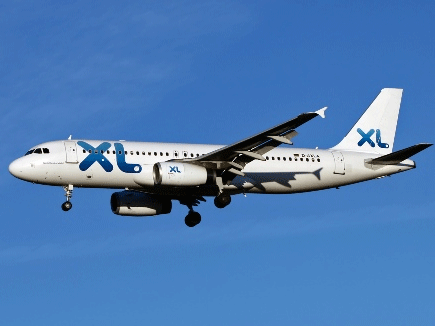French investigators have determined that the Airbus A320 which crashed into the Mediterranean Sea last November had been attempting, at just 3,000ft, a low-speed test normally carried out at flight level 140.
Preliminary information shows that the crew appeared largely to recover from an initial near-stall, before the aircraft suddenly pitched up, banked heavily right, and entered a fatal high-speed dive.
The aircraft had already been cleared for an instrument landing system approach to Perpignan's runway 33, where it was to perform a go-around and depart for a delivery flight to Air New Zealand in Frankfurt.
Two Air New Zealand personnel, one of them a pilot, were present in the cockpit with the XL Airways crew who were operating the A320. The ANZ pilot had started verbally running through low-speed test procedures while the aircraft, being vectored by air traffic control, was at FL120 and on a 090° heading.
But air traffic control continued to issue instructions to the aircraft, preparing it for the approach. The jet was cleared down to FL60 and a heading of 190°, then to a height of 5,000ft and afterwards to the ILS approach.
|
|---|
© French Frogs Aviation Pictures |
As the A320 complied with the vectoring, the captain indicated that the low-speed test would have to be postponed, or dropped altogether. He stated: "I think we will have to do the slow flight probably lateror we do it on the way to Frankfurt, or I even skip it."
But after the aircraft reached 5,000ft and descended below the cloud layer towards a cleared height of 2,000ft, the captain switched off the autopilot and asked the ANZ pilot about the low-speed test. At just above 4,000ft, the captain retarded the thrust levers to 'idle' - disengaging the autothrust - and called for landing-gear extension.
After the co-pilot informed air traffic control that the A320 intended a go-around and departure to Frankfurt, the captain stabilised the jet at 3,000ft in full landing configuration.
Over a period of 35s the aircraft's horizontal stabiliser moved to an 11.2° pitch-up deflection and the aircraft's speed - already considerably below the 180kt instructed by air traffic control - fell back. The flight-data recorder trace shows the horizontal stabiliser stayed in this position throughout the subsequent emergency.
As the A320 reached nose-up pitch of 18.6° its speed dropped to 99kt and the stall warning sounded. The thrust levers were immediately moved to 'take-off/go-around' power.
Flight-recorder data shows that the aircraft rolled left, then 50° right, as the captain made lateral and longitudinal side-stick inputs to counter. Its pitch reduced to 11° and the A320's pitch and roll flight-control laws passed from 'normal' to 'direct' - preventing the automatic systems from offering protection.
The aircraft started rolling again to the left, reaching 40°, before the captain eased off his lateral input and the stall warning stopped. The captain also cancelled his longitudinal input as the aircraft's pitch reached 7° and the speed climbed to 138kt.
But as he eased the pitch input the aircraft's pitch and altitude started to increase. The crew retracted the landing-gear - the A320's pitch flight-control law switched to 'alternate' - and the stall warning sounded again. The aircraft continued to pitch up, reaching 57° at 3,800ft, and banked 40° left, at which point the speed was below 40kt.
Less than 15s later, and barely 90s after initiating the low-speed test, the aircraft banked 97° right and pitched down. It reached a maximum nose-down pitch of 51° during the ensuing short dive, recovering to 14° nose-down and 15° right bank before striking the water at 263kt.
In its preliminary report into the crash, the Bureau d'Enquetes et d'Analyses states that Airbus demands the low-speed test - to check angle-of-attack protection - be performed at about FL140, and that the airspeed is kept at a specific level. For this particular aircraft this speed was 123kt.
None of the seven occupants survived the 27 November accident.
- Read Kieran Daly's blog on the A320 crash
- Read David Learmount's blog on pilot error
Source: Air Transport Intelligence news




















